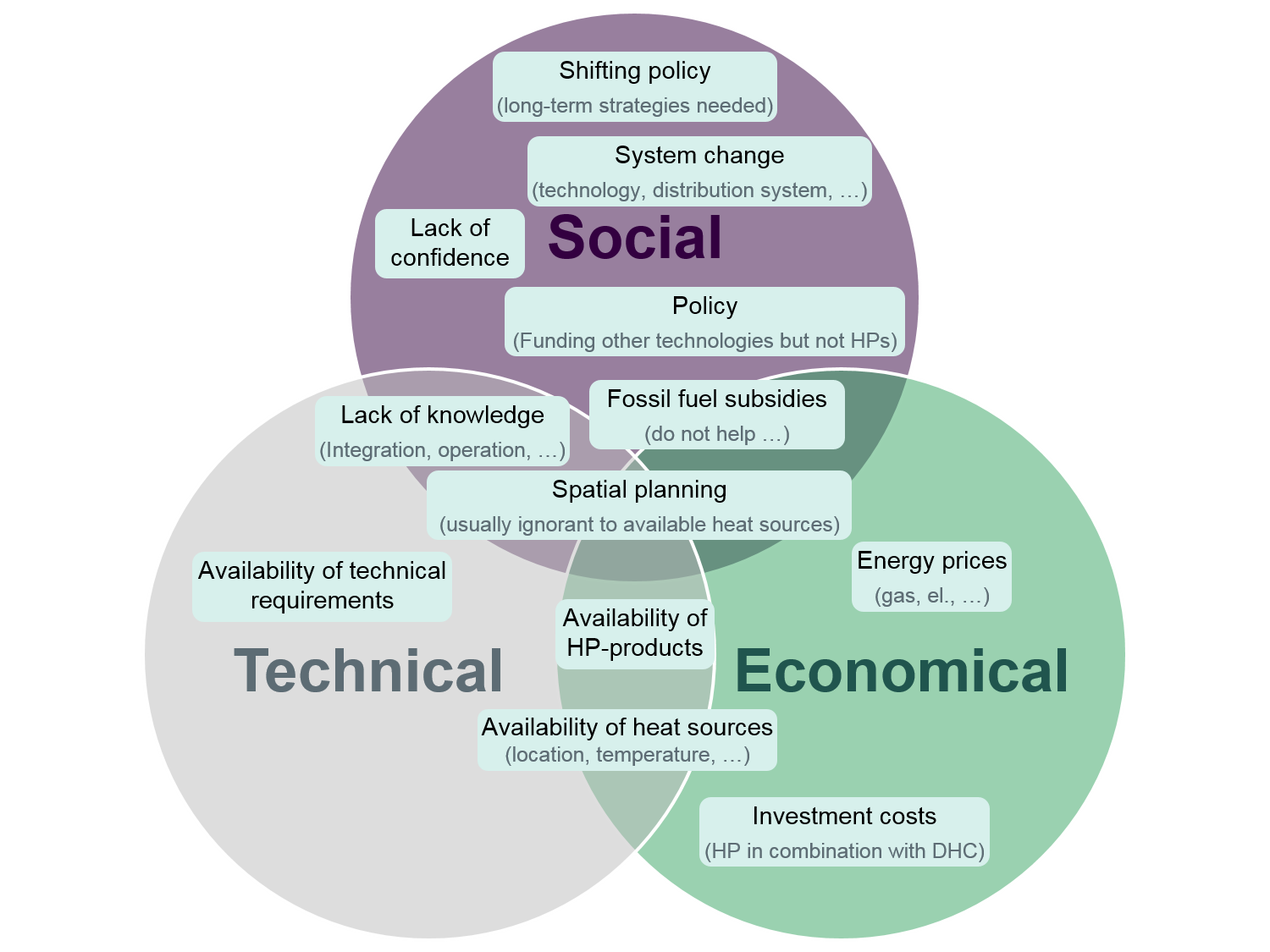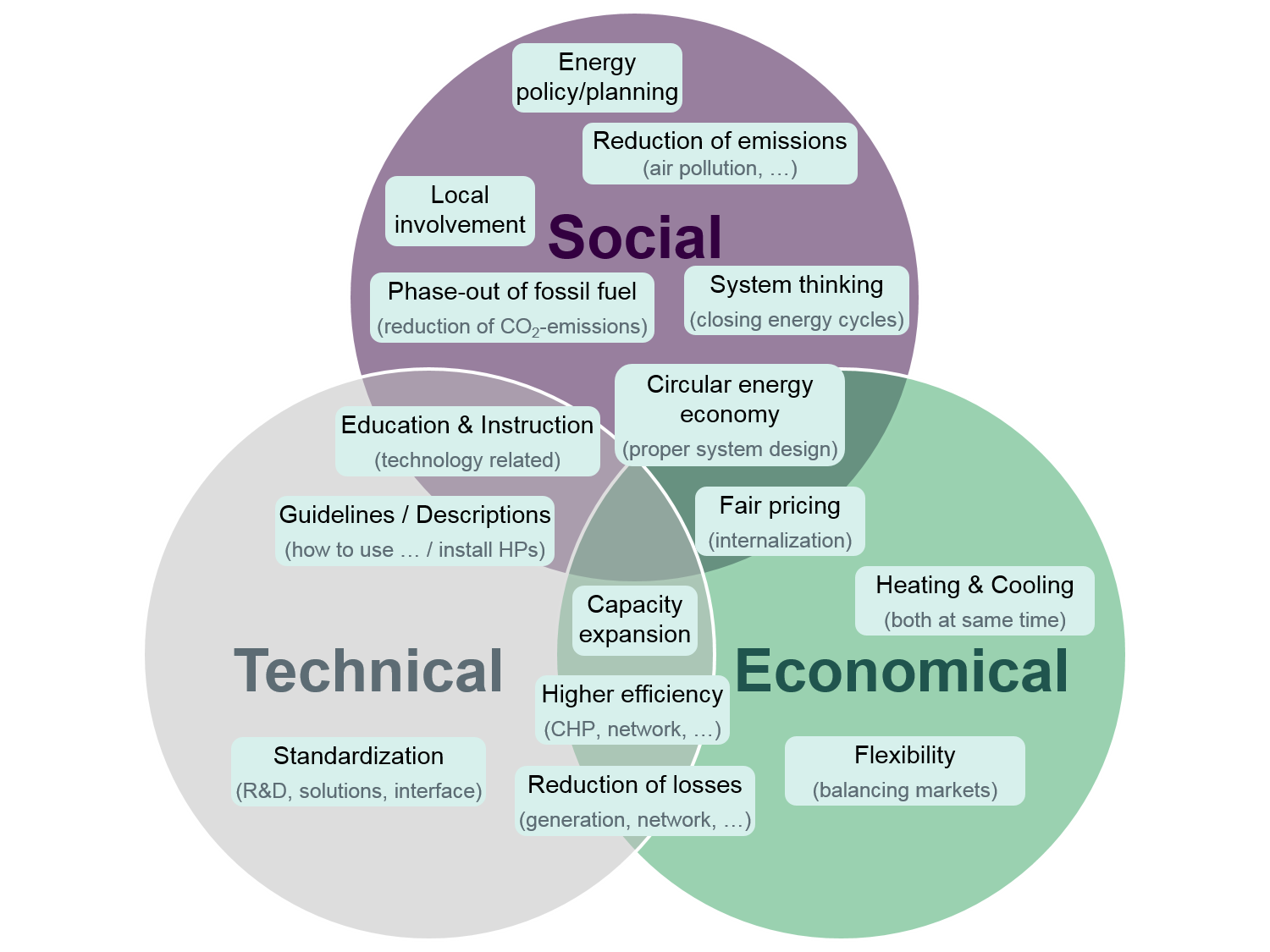IEA HPP Annex 47: Heat Pumps in District Heating and Cooling Systems
Short Description
Status quo
District heating networks are indispensable for the future energy system, especially in conurbations. The integration of heat pumps can reduce investment risks, increase security of supply, reduce CO2 emissions and thus contribute to the COP 21 objectives agreed in Paris. However, heat pumps still play a subordinate role in European district heating networks.
Nevertheless, the acceptance of heat pumps by district heating operators has increased in recent years. This has led to many innovative heat pump projects, as Task 2 of the Annex shows. As part of the project, 24 realized heat pumps with a total heating capacity of 108 MW were surveyed. These heat pumps are installed in 14 different district heating networks. The distribution of the individual locations across Austria is shown in the following figure.
Implementation barriers
Although heat pumps can be advantageous for DH networks, they are still underrepresented. Based on stakeholder workshops and literature research, implementation barriers were identified and discussed. The following graph gives an overview of aspects and challenges that have been considered in the removal of barriers. The results are summarized in three categories (social, economic and technical barriers) and presented in the following figure.
Obstacles to the large-scale integration of heat pumps are unsuitable heat sources (often only available in small decentralized quantities) or the low temperature level of the sources (low efficiency). Similarly, most operators (still) lack experience with the integration and operation of heat pumps in existing district heating systems (compared to proven biomass or gas-based generation plants).
Possibilities and solutions
For the integration of heat pumps into district heating networks, general solutions were developed within the framework of the project and described below (see Task 4 report). These solutions may also require innovative business models. Possible solutions were discussed in stakeholder workshops. The results are summarized in the same categories as the barriers and shown in the following figure.
An optimal combination of heat generation plants in DH grids depends on the different parameters and therefore individually for each grid. To achieve a sustainable heat supply, which includes a considerable share of alternative heat sources, the implementation of further demo projects is necessary. A promising application is the use of flue gas condensation in thermal combustion systems in combination with heat pumps.
Participants
Austria, Denmark, Sweden, Switzerland, United Kingdom
Contact Address
Roman Geyer, Charlotte Marguerite, Ralf-Roman Schmidt
Center for Energy
AIT Austrian Institute of Technology GmbH
E-Mail: roman.geyer@ait.ac.at
Alexander Arnitz, René Rieberer
Institut für Wärmetechnik
TU Graz



